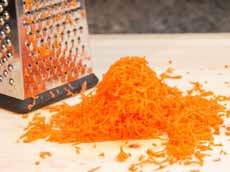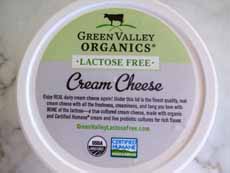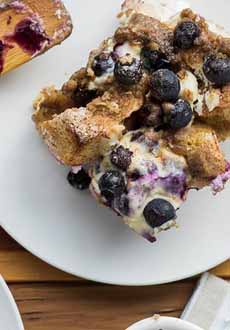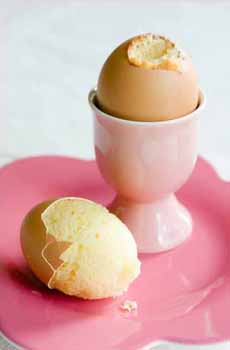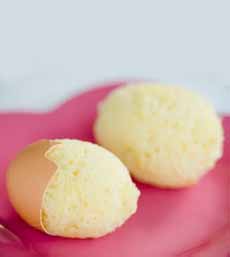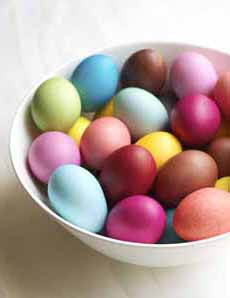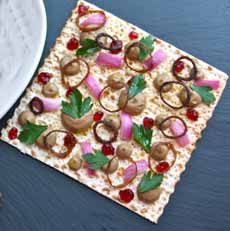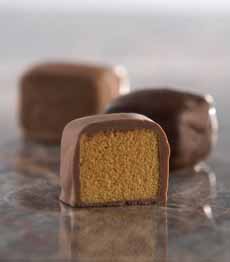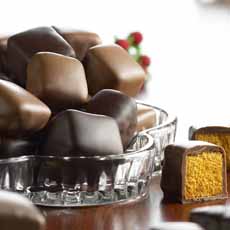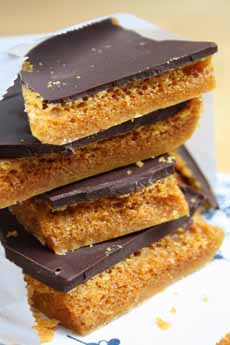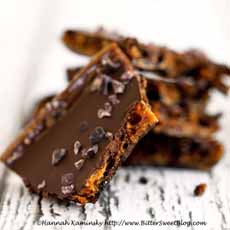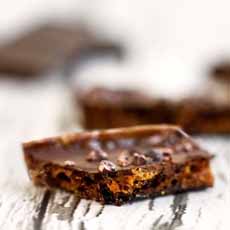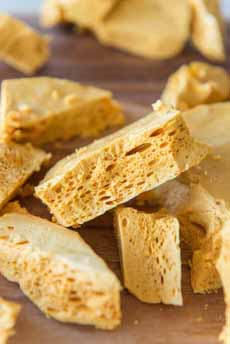|
February 21st is National Sticky Bun Day. Sticky buns and cinnamon rolls were the biggest treat of our childhood breakfasts: Better than waffles or pancakes.
The Horn & Hardart Automat, Americas’s first fast food chain, had such popular items that customers clamored to take them home. They set up a retail arm to package and sell some of them in retail stores.
Our family devoured many boxes of the honey buns. Today, they’d be called pecan sticky buns.
CINNAMON BUNS VS. STICKY BUNS: THE DIFFERENCE
The terms are often used interchangeably, but there are two categories of sweet yeast buns: cinnamon buns and honey (now called sticky) buns. Other terms include cinnamon rolls, cinnamon swirls, honey buns, and sticky buns, among others (cinnamon pecan rolls, e.g.).
All are made with a cinnamon swirl inside; they may have raisins as well.
But a honey bun or sticky bun needs to have a sticky topping: caramel, honey, maple syrup, or sugar syrup. These typically have a garnish of nuts. Those topped with white icing fall into the cinnamon bun category.
And only the sticky bun has its own holiday.
Now: What if you could bake a pan of sticky buns or cinnamon buns with ease, and bring them to the table warm and fragrant?
If this sounds like your kind of good time, McCormick has created the easiest recipe, an “overnight” casserole. But below we have recipes for:
Overnight Cinnamon Rolls Casserole
Overnight Lemon Blueberry Muffin Casserole
THE EASIEST WAY TO MAKE “CINNAMON BUNS”
Mix five ingredients together the night before—bread, milk, cinnamon, and vanilla—just 10 minutes of prep time.
The next morning, just bake the casserole for 25 minutes until golden brown. It then gets a drizzle of cream cheese frosting: 30 minutes total.
We served it yesterday, and a very good time was had by all—with some leftover for today.
While the recipe is a casserole, you slice it into square, bun-size pieces. The difference:
Conventional buns are individually shaped and then baked together side-by-side in a pan, and then pulled apart.
The casserole has bread cubes like a bread pudding. It bakes as a whole and is then cut into pieces.
RECIPE #1: OVERNIGHT CINNAMON ROLLS CASSEROLE
Ingredients For 12 Servings
12 eggs
1-1/2 cups plus 3 tablespoons milk, divided
2 tablespoons ground cinnamon, divided
5 teaspoons pure vanilla extract, divided
1/4 teaspoon baking powder
1 loaf brioche or challah bread, cubed
1/4 cup butter, melted
Cooking spray
1/4 cup firmly packed brown sugar
1/2 cup whipped cream cheese
3 tablespoons confectioners sugar
Preparation
1. WHISK the eggs, 1-1/2 cups of the milk, 1 tablespoon of the cinnamon, 3 teaspoons of the vanilla, and the baking powder in a large bowl until well blended. Add the bread cubes and toss to coat well.
2. GENTLY POUR into a 13″ x 9″ baking dish, sprayed with no-stick cooking spray. Cover and refrigerate for at least 4 hours or overnight.
3. PREHEAT the oven to 350°F. Remove casserole from the refrigerator. Mix the melted butter, brown sugar, and remaining 1 tablespoon of cinnamon in a small bowl until well blended. Drizzle the over casserole. Let stand 10 to 15 minutes.
4. BAKE for 20 to 25 minutes or until golden brown. Meanwhile…
5. MAKE the cream cheese topping. Mix the cream cheese, confectioners sugar, and remaining 2 teaspoons of vanilla in a small bowl until smooth. Slowly stir in the remaining 3 tablespoons of milk.
6. REMOVE the casserole from the oven and let stand for 5 minutes. Drizzle over the casserole before serving.
|
|

[1] and [2] Overnight Cinnamon Roll Casserole. See the process step by step, from Gimme Some Oven (photos #1 and #2 © Gimme Some Oven).

[2] You can also serve the casserole as a dessert, with vanilla or cinnamon ice cream. You can even add a sprinkle of Grand Marnier.
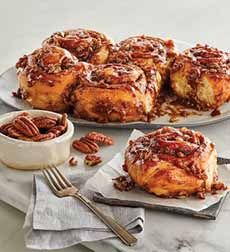
[3] Sticky buns have a honey or other sticky topping, with chopped nuts. You can get them from Wolferman’s (photo © Wolferman’s).

[4] Conventional: A pan of cinnamon buns with their conventional glaze. Here’s the recipe from The Baker Chick (photo © The Baker Chick).
|
ROLL OR BUN: THE DIFFERENCE
There are many Standards Of Identity defined by the USDA and the FDA, but buns and rolls are not among them.
Thus, there is no official answer. According to the American Institute of Baking:
A roll is usually a hard-crusted small bread, such as French rolls and Kaiser-rolls. However, some hard-crusted individual breads are soft, like hot dog rolls.
A roll can also contain a filling, such as cinnamon rolls (which, in many areas, are sold as cinnamon buns) and Danish rolls.
A bun is generally more bread-like in shape (round or elongated) and soft. It typically does not contain a filling. An exception to this is hot-cross buns.
So the answer is, there is no answer. Historic, regional, and family traditions often determine what is a bun and what is a roll.
You may buy hot dog and hamburger rolls, for example; we buy buns.
|


